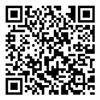Specific Solutions
Common Knowledge in Translation
In the process of translation, translators not only need to convert texts between multiple languages but also ensure that the original information does not lose its meaning during the transition. The tone and voice should align with the source text, which means that translators must carefully choose their words and select the most appropriate translation methods. For experienced translators, the common knowledge accumulated over years of work is often sufficient to handle most situations. In contrast, novice translators require extensive practice over time to develop their linguistic intuition and accumulate knowledge.
Common knowledge refers to the practical judgment derived from life experiences, which can help translators complete translations quickly and accurately, making the translated text vivid and aligned with the writing conventions of the target language.
Common knowledge can be categorized into various types, such as national capitals, geographical distributions, social customs, etc. These are relatively easier forms of common knowledge that are also simpler to grasp. Additionally, translators need to pay special attention to vocabulary collocations, proper nouns, and emerging terms. For example, different countries have different titles for their leaders: in Saudi Arabia, the title is "ملك" (king), and the crown prince is referred to as "أمير"; in Iran, the leader is called "رئيس" (president), and when there are multiple leaders, they are referred to as "قادة". Conversely, the term "أمين" can refer to a person's name (Amin), a secretary, or a protector, among other meanings. Translators must choose the appropriate interpretation based on context rather than translating mechanically.
In addition to polysemy, unique writing conventions are another aspect of common knowledge that translators must master. In political documents, Chinese often uses the term "龙头" (dragon head) to describe a guiding policy. The official translation is "قاطرة," which means locomotive or train head. Without prior understanding, one might directly translate it as "dragon head," which may be comprehensible to those familiar with Chinese but would be meaningless to Arabic speakers. In contrast, "قاطرة" is easier to understand, as it conveys the idea of leading direction like the front of a train, making it more vivid and relatable.
Translation must be grounded in real life. Different languages arise from distinct cultural backgrounds, and people living within different linguistic cultures have varying environments. A competent translator must take into account the cultures behind both languages and adjust the translation based on practical contexts and common knowledge. Furthermore, translators need to maintain keen insight, staying updated on current events and new vocabulary in their fields to ensure they can make swift assessments during translation.
Common knowledge in translation does not merely signify static knowledge; it also encompasses personal experience gradually accumulated through continuous translation work. Gaining experience through practice and applying it back into practice enhances one's translation skills and text quality. This embodies the significance of mastering common knowledge in translation.


















